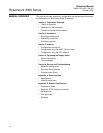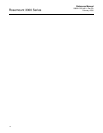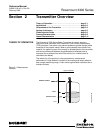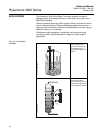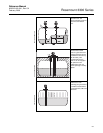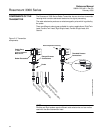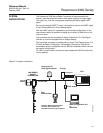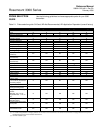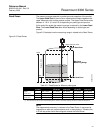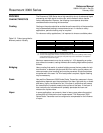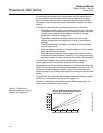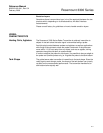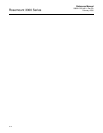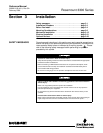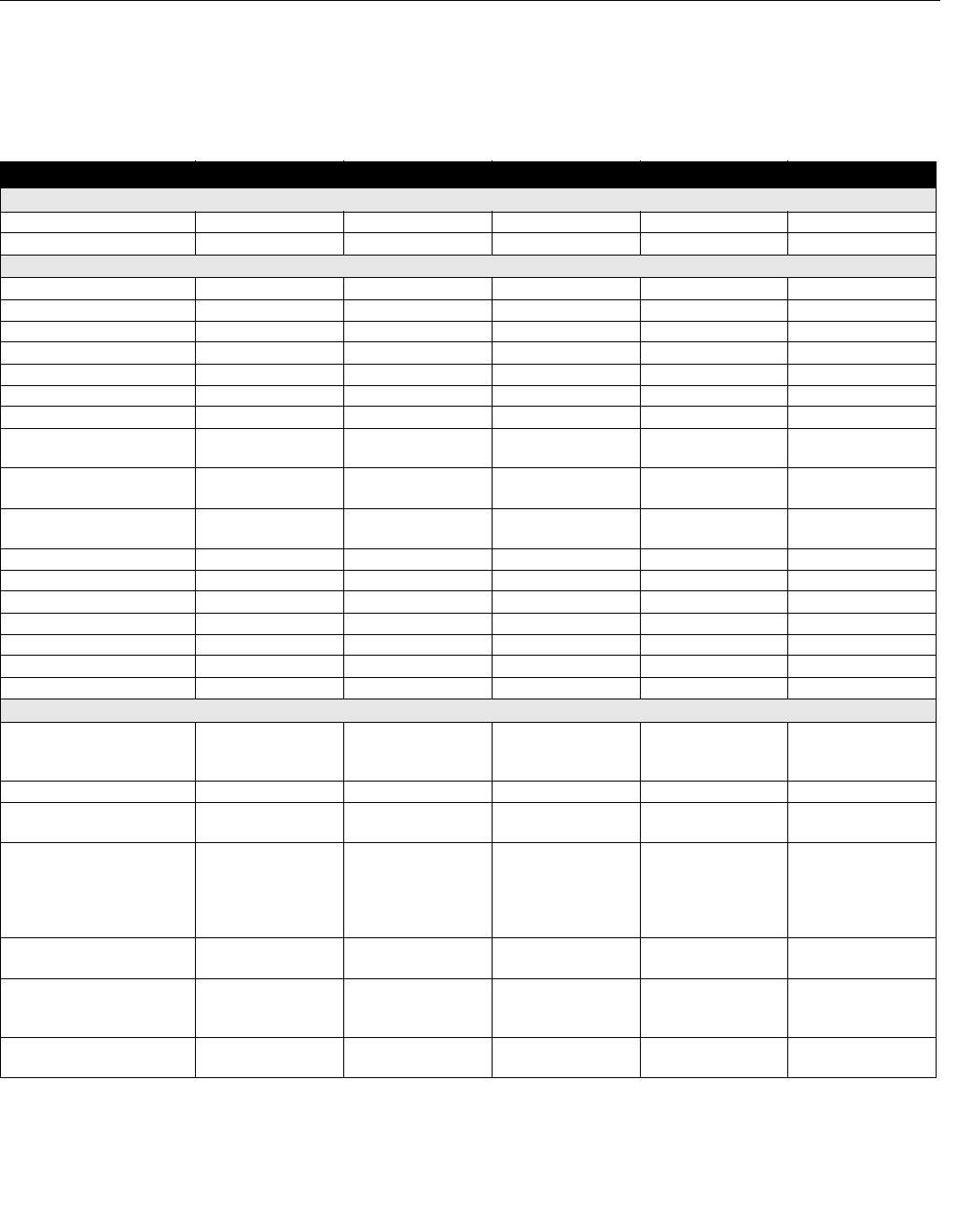
Reference Manual
00809-0100-4811, Rev CA
February 2006
Rosemount 3300 Series
2-6
PROBE SELECTION
GUIDE
Use the following guidelines to choose appropriate probe for your 3300
transmitter:
Table 2-1. Probe selection guide. G=Good, NR=Not Recommended, AD=Application Dependent (consult factory)
Coaxial Rigid Twin Lead Flexible Twin Lead Rigid Single Lead Flexible Single Lead
Measurements
Level GGGGG
Interface (liquid/liquid) G
(1)
G G NR NR
Process Medium Characteristics
Changing density G GGGG
Changing dielectric
(2)
GGGGG
Wide pH variationsGGGGG
Pressure changes G GGGG
Temperature changes G GGGG
Condensing vapors G GGGG
Bubbling/boiling surfaces G G AD G AD
Foam (mechanical
avoidance)
AD NR NR NR NR
Foam (top of foam
measurement)
NR AD AD AD AD
Foam (foam and liquid
measurement)
NR AD AD NR NR
Clean liquids GGGGG
Liquid with dielectric<2.5 G AD AD AD
(3)
NR
Coating liquids NR NR NR AD AD
Viscous liquids NR AD AD AD G
Crystallizing liquids NR NR NR AD AD
Solids/Powders NR NR NR AD AD
Fibrous liquids NR NR NR G G
Tank Environment Considerations
Probe is close
(<12 in./30 cm) to tank wall
/ disturbing objects
GADADNRNR
High turbulence G G AD G AD
Turbulent conditions
causing breaking forces
NR NR AD NR AD
Long and small mounting
nozzles
(diameter <6 in./15 cm,
height>diameter + 4 in./10
cm)
G ADNRNRNR
Probe might touch nozzle /
disturbing object
G NRNRNRNR
Liquid or vapor spray might
touch probe G NR NR NR NR
Disturbing EMC
environment in tank
AD NR NR NR NR
(1) Not in fully immersed applications.
(2) For overall level applications a changing dielectric has no effect on the measurement. For interface measurements a changing dielectric of the top fluid
will degrade the accuracy of the interface measurement.
(3) OK when installed in pipe.



